The Beginner's Guide to Buying Antique Furniture
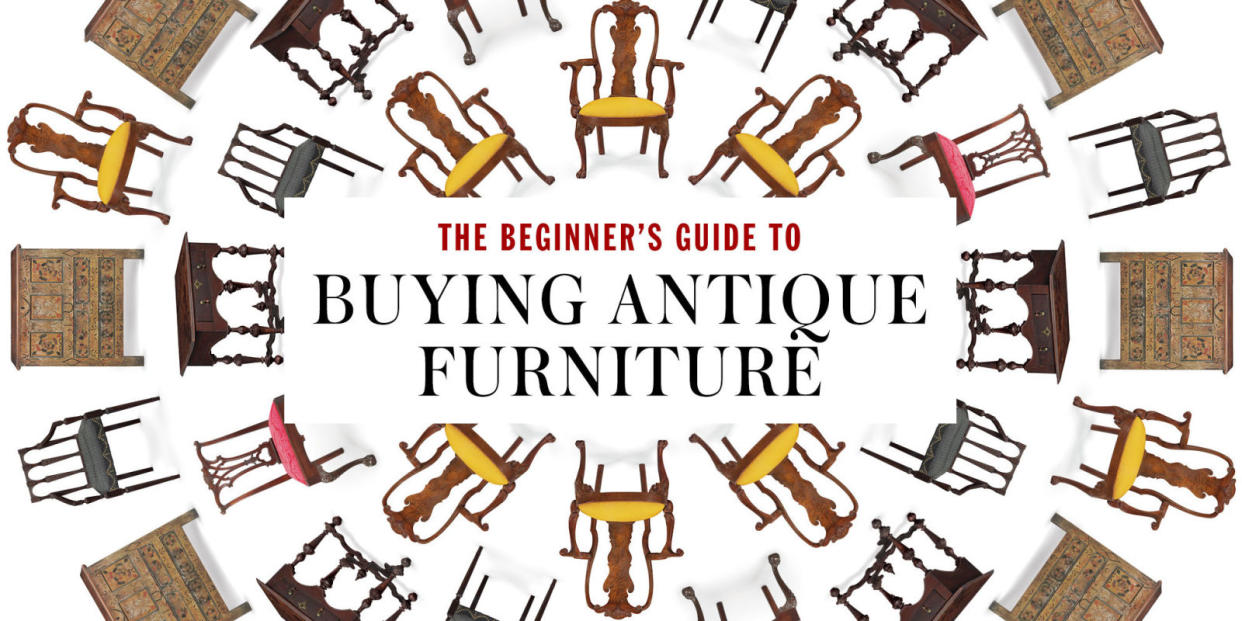
Americana Week, which runs the third week of every January, is in full swing.
For tips on how to approach this marathon of antiquing, T&C consulted Andrew Holter, Specialist and Head of Department in American Furniture & Decorative Arts at Christie's. Below, Holter's advice on what to look for at the flagship event of the week, the Winter Antiques Show (opening Thursday, with an exhibition on loan from the Abby Aldrich Rockefeller Folk Art Museum at Colonial Williamsburg), and what to consider when you're in the market for decorative arts.
"When collecting antiques the first and most important rule is buy what you like," Holter says. "The key when buying pieces is to acquire objects that you want to live with and that you derive pleasure from looking at each day. However, if you want to hedge your investment there are a few golden rules that should apply when you evaluate an object. Condition, proportion/design, rarity, surface, provenance,and quality all contribute to both the success and monetary value of a piece."
This Friday, January 20, Christie's is hosting a sale of exceptional American furniture, folk art, and silver. "Listed below are five superb pieces," Holter says, "and if we look at each one we will point out a key point which contributes to its excellence."
RARITY
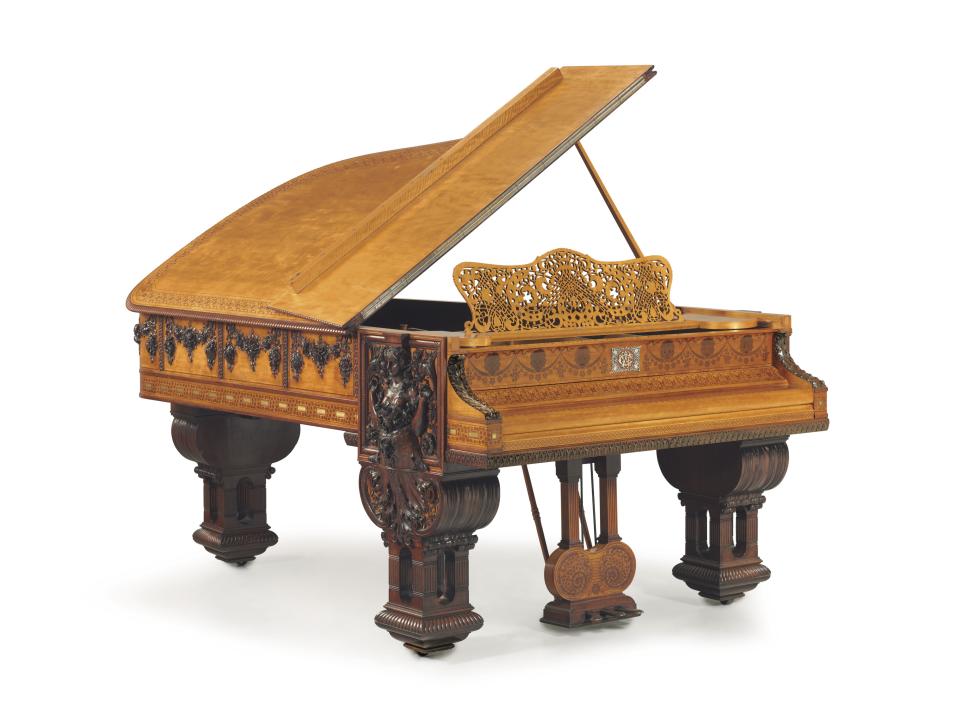
Steinway & Sons Model B Grand Piano: "Exceptionally beautiful and exceedingly rare, this incredible survival is sure to capture the interest of many a collector, institution or dealer alike. Apart from it aesthetic beauty, this object is particularly interesting because of all we know about it," Holter says. "Recently the centerpiece of an exhibition at the Metropolitan Museum of Art, this object serves as the keystone for work done by George A. Schastey & Co.. Relatively obscure, George Schastey was a highly skilled cabinetmaker that completed some of the finest interiors and furnishings for New York City's elite. What is exceptional about this piano is that the records exist at Steinway for the original order placed by William Clark, a Newark, New Jersey textile merchant. We know when the piano was ordered and its delivery date to the customer on December 30, 1882. The Steinway records also reveal that the art case was to be provided by George Schastey. Knowing when an object was made, who it was made for, and who it was made by is extraordinarily rare. This type of historical information will often generate tremendous buzz with both the scholarly and commercial worlds. Often times when this intersection happens, a piece will perform very well."
Estimate: $300-500,000
Lot 706: The William Clark Exceptional Aesthetic Movement Metal-Inlaid Satinwood and carved purpleheart Model B Grand Piano, the piano movement by Steinway & Sons (est. 1853), The Art Case documented to George A. Schastey & Co. (w. 1873-1894), New York City, dated and Documented to 1882
SURFACE
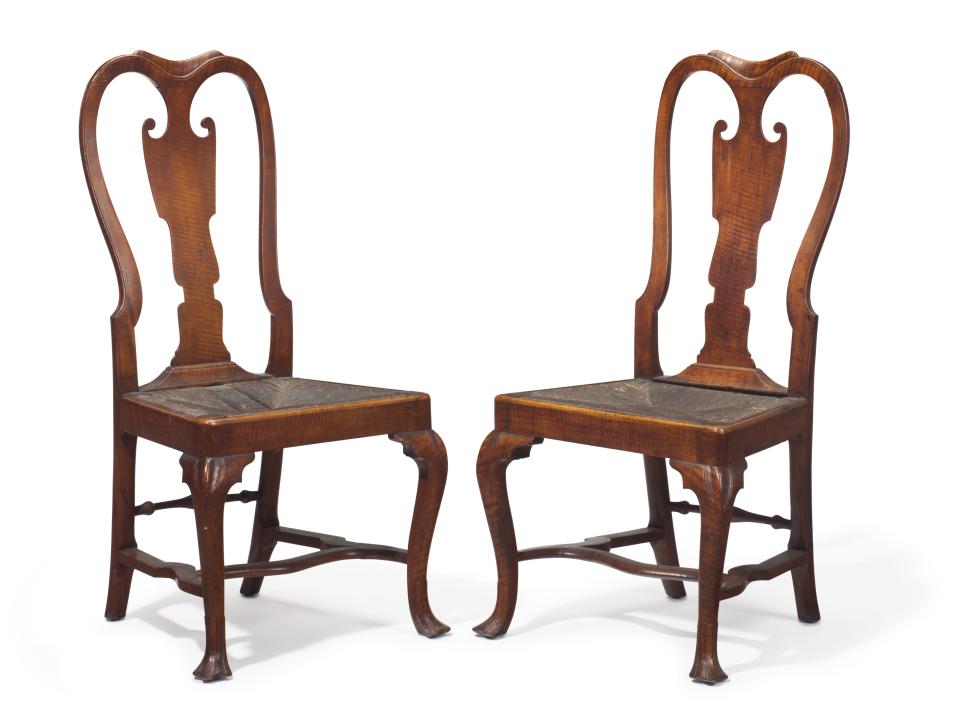
A Queen Anne Figured Maple Side Chair: "This pair of chairs being sold separately, but consecutively, are rare survivals from the mid-18th century. Collectors love objects in original condition and surface because there is an unmistakable and undeniable authenticity to them," Holter says. "These chairs made out of highly figured maple retain their original rush seats stuffed with rolled seagrass for padding and have a rich, brown surface which is the result of years of wear and loving care. Sinuous in design, these chairs are a virtual symphony of curves that exemplify the Queen Anne taste and epitomize William Hogarth's Analysis of Beauty. Elegantly proportioned and delicate in feel, these chairs are sure to capture the eyes of the most seasoned collectors, right down to the novice who simply has an appreciation for all things beautiful."
Queen Anne followed the William and Mary period and is named after the English monarch who reigned from 1702 to 1714. It is characterized by a sophisticated fluidity, achieved through the use of the newly-introduced cabriole leg, curving chair crests, and decorative shells and volutes, or scroll-like forms.
Estimate: $80,000-120,000
Lots 538 and 539: A Queen Anne Figured Maple side Chair, Possibly William Savery (1722-1787), Philadelphia 1740-1755
PROPORTION
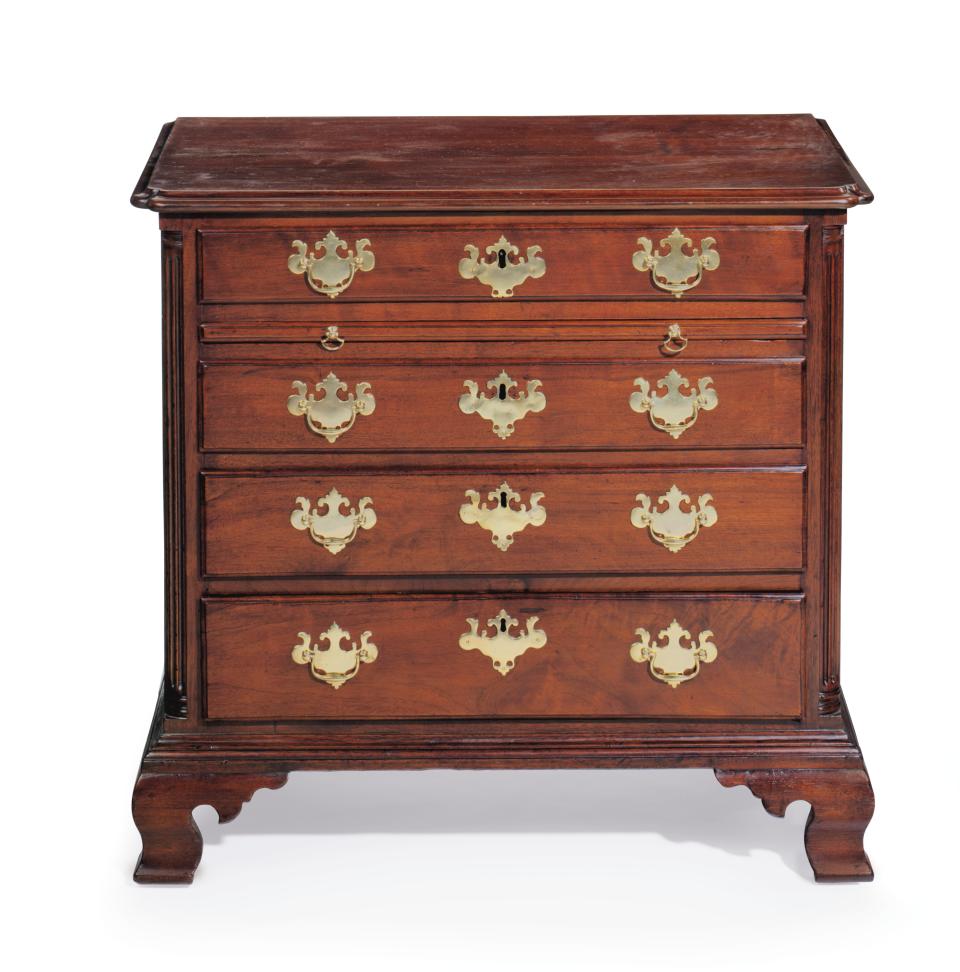
A Diminutive Chippendale Figured Walnut Chest-of-Drawers: "There is an expression in the business that 'Cute Sells,'" says Holter. "This chest goes well beyond being just cute. The most successful objects are ones that are well balanced and proportioned. What makes this chest is its' diminutive size. It is very rare to find a chest this small across the face of the piece. The cabinetmaker has brilliantly executed this piece with a highly developed balance of both height and width. American Furniture collectors strive to find pieces which exhibit great verticality. The delicate, yet strong ogee feet give tremendous lift to the chest and the selection of figured wood helps draw the eye up and down the chest. In the words of the famous American Furniture dealer Albert Sack, this is a great piece of "apartment furniture." That mean it's tiny enough to fit into a New York City apartment, yet still be important enough to capture the attention of anyone passing by."
Chippendale furniture, produced from around 1755 to 1780, bases many pieces on designs in Thomas Chippendale's The Gentleman and Cabinet Maker's Director, first published in England in 1754. Distinct carving features include acanthus-an ornament resembling foliage-opposing 'C' scrolls, and ruffled, rocaille motifs on the splat (the central support panel of a chair back), knees and skirts of chairs and case pieces, which frequently sit on ball-and-claw feet.
Estimate: $25,000-50,000
Lot 595: A Diminutive Chippendale Figured Walnut Chest-of-Drawers, Pennsylvania, 1760-1780
QUALITY (refinement of carving)
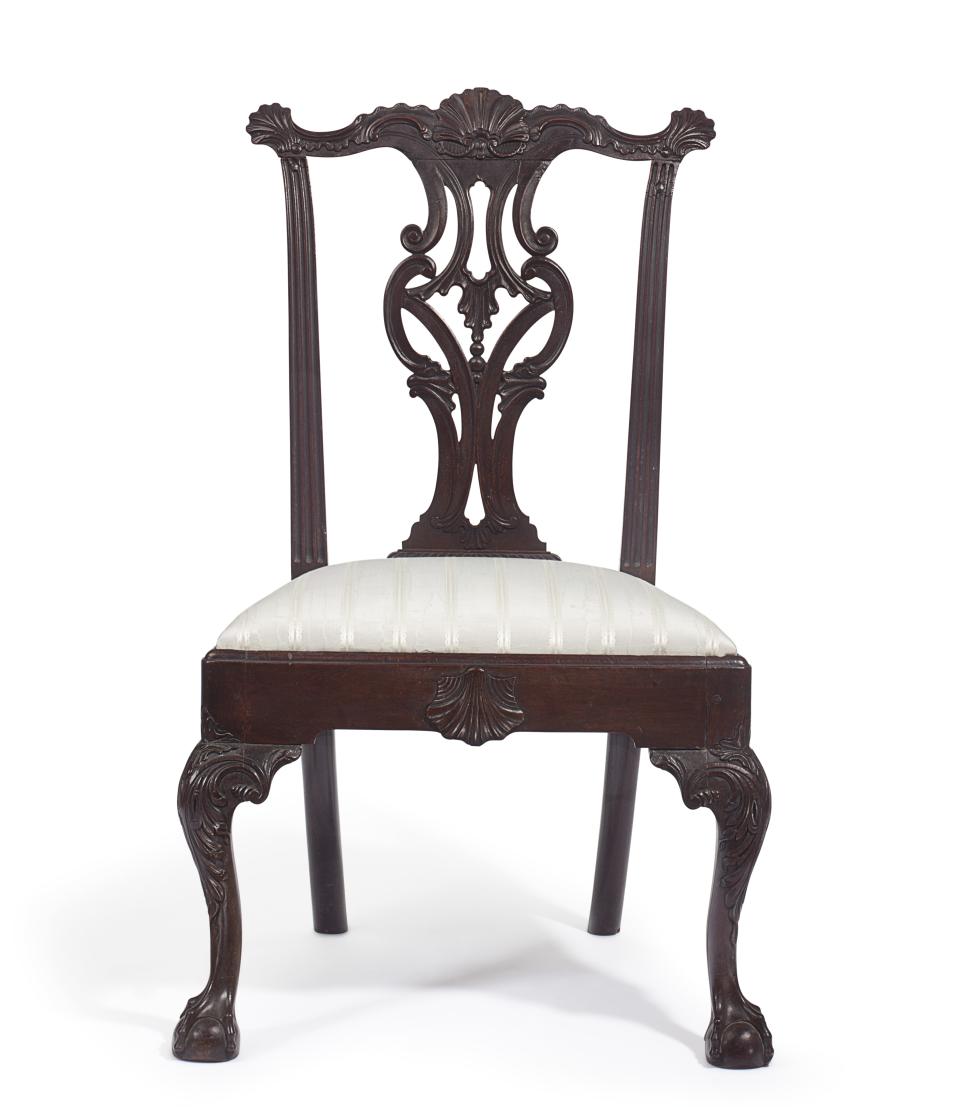
A Chippendale Carved Mahogany Shell-Eared Side Chair: "Arguably one of the most successful interpretations of the Rococo Aesthetic in Philadelphia, this chair fires on many cylinders. The quality of design and carving separate this chair from the pack," Holter says. "Masterfully carved with fluid lines, it is amazing this chair was made prior to the Revolution between 1755-1765. One thing most beginning collectors have trouble grasping is the precision in which furniture was made and ornamented. It is not uncommon to think that because these pieces were made with hand tools, they would look a little rough. In reality, the opposite is true. Eighteenth-century furniture was made with precision and the carving should be crisp, fluid and done with purpose. This chair has several bells and whistles that are sure to please connoisseurs."
Estimate: $20,000-30,000
Lot 546: A Chippendale carved mahogany shell-eared side chair, the carving attributed to the Garvan High Chest Carver, Philadelphia 1755-1765
PROVENANCE

Federal Armchairs (detail shown above): "These chairs are a virtual gold standard for provenance. Hitting on several of the key aforementioned points to look out for, these chairs are exceedingly rare, have terrific surface, proportion, quality and provenance to match," says the specialist. "Recorded in the 1791 account books of Major General John Fiske, who paid the cabinetmaker Jacob Sanderson for '12 mahogany chairs compleat for the house.' It is also known that the carver of theses chairs, Samuel McIntire was the one who built the Fiskes's Walnut street mansion. Having period records and accounts of the order for the furniture is extremely unusual and information that is highly prized by collectors. If you are able to figure out who owned a piece, that is a wonderful thing. Collectors tend to be drawn to their objects not just for their aesthetic beauty, but their history. People naturally gravitate to works they feel a connection to. These chairs are superb because we are able establish a connection between the purchaser, the cabinetmaker and the designer/carver which ultimately expands any potential connection to future admirers."
Federal: This style was introduced in England by Robert Adam, George Hepplewhite, and Thomas Sheraton as the Neoclassical style, which flourished in America from around 1780 to 1820, a time that has come to be known as the "Federal" period.
Estimate: $10,000-20,000
Lot 550: The Major General John and Sarah Fiske pair of Federal Carved Mahogany Armchairs with Eagle-Carved handholds, documented to Jacob Sanderson (1757-1810), Carving attributed to Samuel McIntire (1757-1811), Salem Massachusetts, documented to 1791
You Might Also Like


